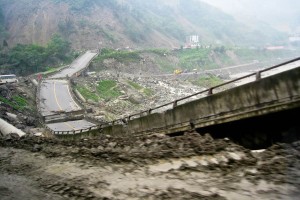Two earthquakes hit China’s western Gansu province this week, leaving at least 100 dead and over 800 severely injured, while 9,000 buildings were completely destroyed and tens of thousands more badly damaged, at least according to official state-released figures.
The quakes hit eight towns in the remote and mountainous Minxian and Zhangxian counties, about 105 miles southeast of the provincial capital of Lanzhou, from 7:45 a.m. on Monday 22nd July. Chinese authorities reported the first earthquake was of a magnitude of 6.6 , and that by Monday evening 422 aftershocks had been recorded, with the strongest measuring 5.6 in magnitude – effectively a second earthquake.
Li Jingui, a student in Dingxi, told AP news agency of the moment she felt the earthquake: “I saw the bulb hanging from the ceiling start swinging wildly around. I woke my two friends and we ran into the bathroom to hide.”
“After the strongest tremors were over, we were worried that there would be aftershocks so we packed our stuff and ran out into a large clearing,” she added.
“I know I had a lucky escape,” 18-year-old Yang Su Xiao told Agence-France Presse news agency. “I am glad we are all not injured, but we don’t know how we are going to repair the damage.”
Photos posted on Chinese social media showed roads on the sides of riverbanks had subsided and farmhouses reduced to piles of red bricks. There were also power outages and mobile phone and Internet coverage was disrupted.
Xinhua, China’s official news agency, say around 3,000 police and rescue personnel have been sent to the affected region, though landslides and flooding have hindered their efforts. As much of the mud is made of loess, a fine yellow sandy silt, the chance of finding survivors under the landslides is considered slim.
Western China has been no stranger to devastating tectonic activity in recent years. An earthquake hit the neighbouring province of Sichuan this April, killing 164 people and injuring more than 6,700. That same area was also home to the enormous Wenchuan earthquake of 2008, measuring 7.9 and killing a staggering 70,000 people.










